Why this artist is making ink from guns
In February, the artist and ink-maker Thomas Little loaded up his van and traveled around North Carolina to paint 20 delicate, lonely vignettes of American landscapes — each one representing a city in his home state that experienced at least one mass shooting in 2023.
On their subject matter alone, the paintings of water towers, street signs and brick facades are a subtle but harrowing visual record of violence in the US, portrayed through a sense of absence and loss. But the unexpected source of Little’s colors make his scenes even more potent: The pigments are made from the chemical compounds of guns, taken out of circulation and dissolved in Little’s workshop.
For more than five years, Little has performed this kind of alchemy, purchasing handguns and automatic rifles from pawn shops and dissolving the iron-heavy parts in acid to form iron sulfate, the basis for writing inks and artists’ pigments in deep blacks, rusty reds and warm ochres. As the son of a gunsmith, this practice is something of a birthright for him, but entirely subversive as he transforms objects of violence into materials for expression.
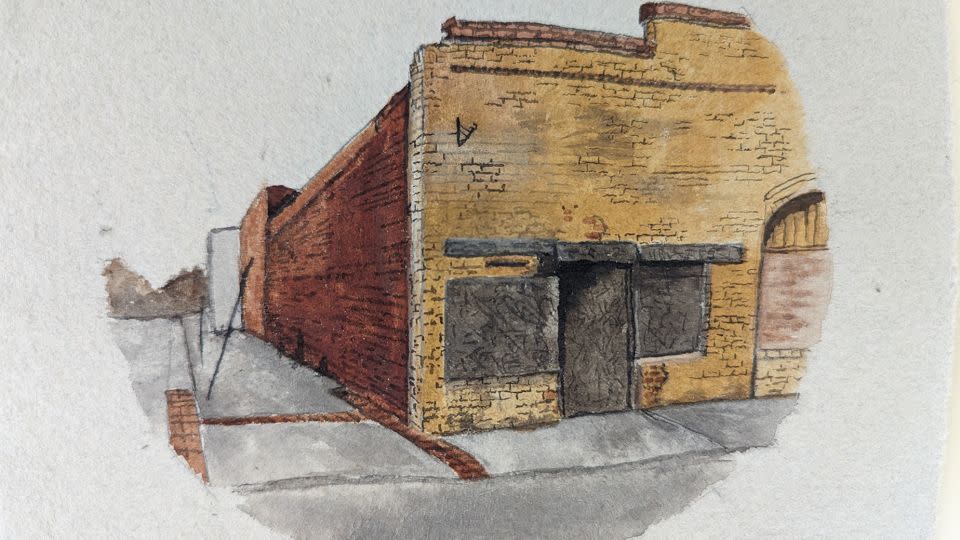
Ink is a nebulous material, Little explained in a phone call, made from nearly anything rich in pigments along with the binder gum Arabic. It can be made from foraged berries, leaves, and minerals, but Little became interested in making iron-based inks — the standard for many centuries — from the ferrous parts of firearms. By mixing iron sulfate with tannic acid (which Little derives from cooking the plant sumac), the ink gets its deep shade, which darkens on the paper’s surface once exposed to oxygen.
“I’ve always been into chemistry, and I really liked the history of ink, and (because) my father was a gunsmith, there were always lots of gun parts laying around,” Little said. “So it was kind of a matter of practicality to go about using those parts. But then it was realizing how powerful it was to take a weapon and make it into a writing material or an art supply.”
As an illustrator and animator, Little often felt as if the aim of his practice evaded him. But turning guns into ink has given him a sense of purpose.
“It feels like a remedial process for society, in my mind, and has this wonderful, magical, transmutational (aspect),” he said.
‘Haunted’ landscapes
Traveling around North Carolina, Little felt as if the scenes he painted, each rendered with the remnants of guns, were haunted. (Little didn’t paint the exact sites of each shooting, finding that to be “too grim.”) The 20 cities were home to 33 mass shootings last year — the term is defined as a shooting with at least four victims injured or killed — and are just a small percentage of the 656 across the country. Nearly 43,000 people died from gun injuries across the US in 2023, according to the database Gun Violence Archive.
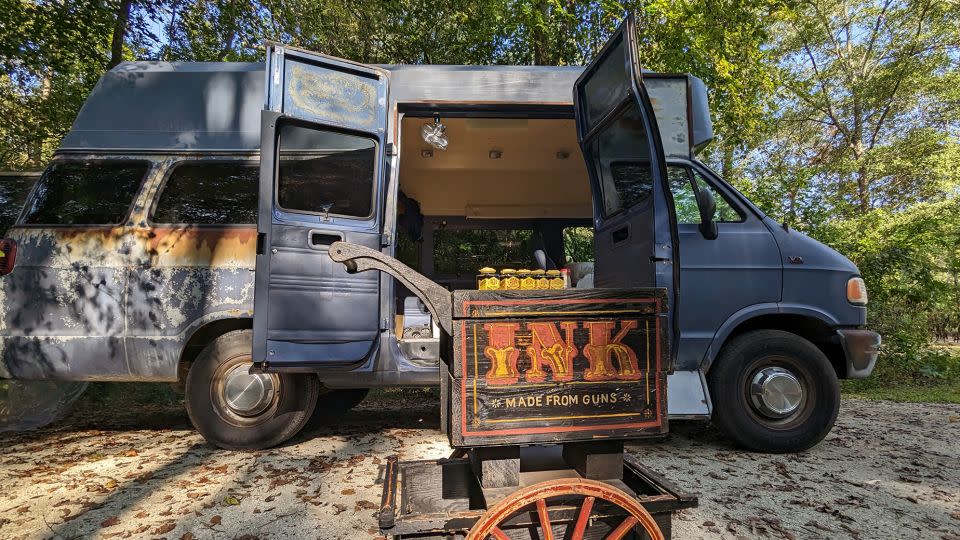
The inkmaker has felt the deep impacts of gun violence on his own life. One of his close friends and mentors in animation, Helen Hill, was killed in New Orleans in 2007 when a stranger entered the home she shared with her husband and young son and shot her in the middle of the night. Her murder was never solved.
“It just left a huge hole in me, and her entire family… her community,” Little recalled. “It was just this huge shock. And it took me years to really work around it.”
For him, making ink is not only a refuge, but a small way to help balance the scales for the lives that have ended by guns.
“Ink is a kind of necromancy. The dead speak to us through ink… through documents from hundreds of years ago,” Little said. “There’s a little bit of poetic justice to use the instruments that silence people, that robbed (their) voice from the world to instead preserve a voice for the future.”
Using the ‘iron rainbow’
Little’s inkmaking remains a one-person show in Sampson County, a rural agricultural part of the state. Recently, he has dissolved a Beretta .45 revolver, Smith & Wesson .38 revolver and an AR-15. He produces his standard liquid ink for sale in larger batches — selling around 2,000 jars total since late 2022 — and works on commission to make the more time-consuming powdered black, yellow and red pigments, which require other processes and ingredients. Red, for example, requires roasting the iron sulfate; yellow, the more finnicky hue, is the result of mixing the iron sulfate with an alkali like baking soda. All require patience.
“I don’t really have a straight-up formula for (yellow),” Little said. “Sometimes I just make it by accident, and it works out. A lot of what I do is watch old jars and see what happens inside of them after a period of time.”
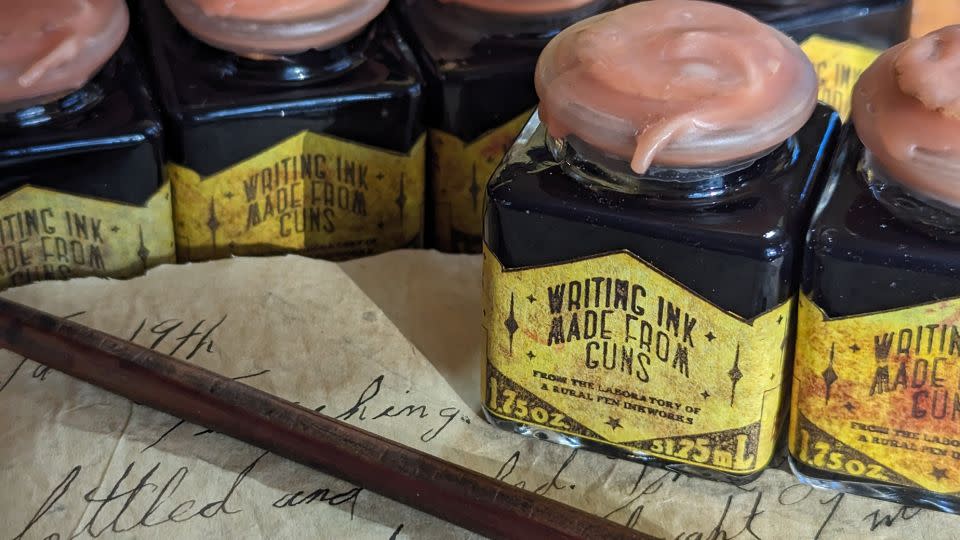
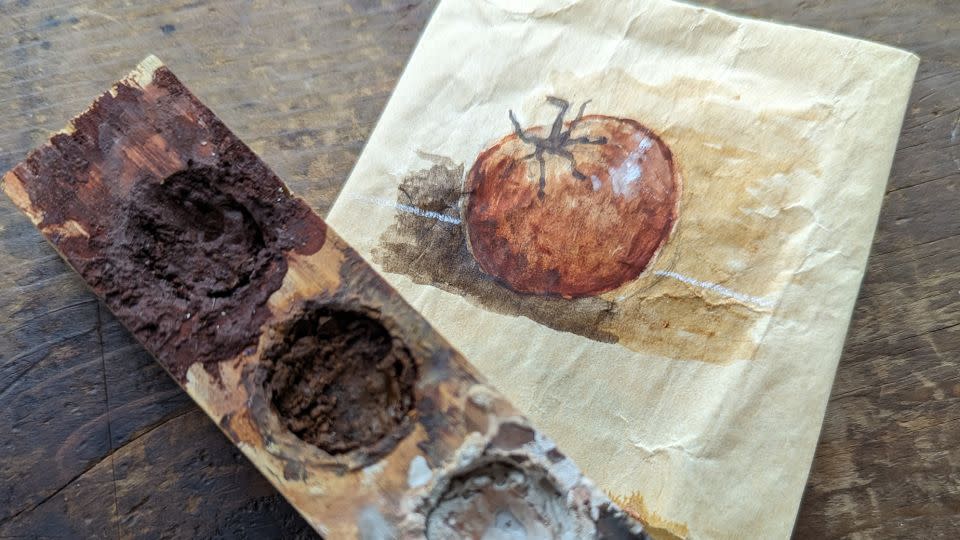
Working strictly with Little’s pigments mean working with a limited palette — what he calls the “iron rainbow” of black, red and yellow. Blue would involve cyanide gas, which Little concedes he’s not quite ready to try (“I’ve been tempted,” he remarked with a laugh), and though he could make white from dissolved bullets, it would be a dangerous lead-based white, so he instead incorporates a white tempera paint or chalk for highlights.
Because of the time and labor involved to make the pigments, Little only produces them in “special batches” for artists who seek them out.
One such creative is Christina Kwan, an Atlanta-based painter and muralist who often works in acrylic ink, making meditative compositions that involve pouring, splattering and calligraphic brushstrokes. Kwan reached out to Little directly on Instagram to inquire about purchasing a much larger quantity of his gun-based ink than he typically produces; so far, she has used his standard ink in her practice, experimenting with them as she considers its implications within her work. Like Little, she is drawn to the process for its ability to transform an object manufactured for violence.
“I had a child in 2020, and ever since I became a mom, I keep dreading the day that I will have to talk to him about preparing for a shooting… in public or in school,” Kwan explained in a phone call. “It just feels like it’s out of your control somehow, no matter what you do. Maybe there is an element of this feeling like something I can control,” she added of using the gun ink, “and hopefully make some sort of meaningful art out of it.”
The Chicago-based Korean American artist Aram Han Sifuentes echoed similiar anxieties around keeping her child safe, particularly as hate crimes against Asian Americans rose in 2020 and have remained a cause for concern. Han Sifuentes, whose practice is primarily fiber-based pieces, has been making work on the effects of gun violence for the past year, and asked Little to make red pigment from an AR-15 for a forthcoming show at the National Liberty Museum in Philadelphia. Just two ounces of the material has allowed Han Sifuentes to dye an enormous 9- by 35-foot stretch of fabric, she explained in a call, with some left over.
“It just speaks to the power of this material,” she said. “But I also like that as a metaphor. It’s like gun violence in that this small thing can do so much, and it’s so potent.”
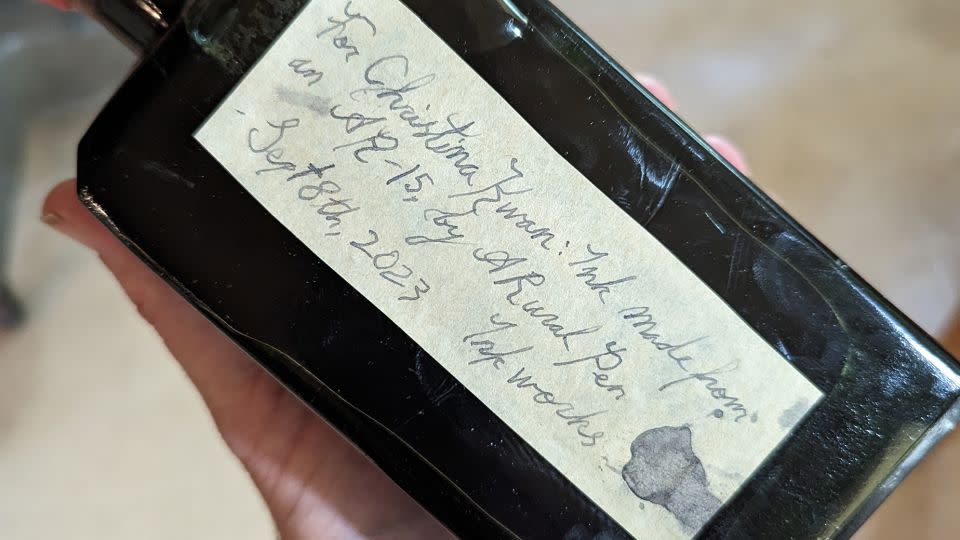
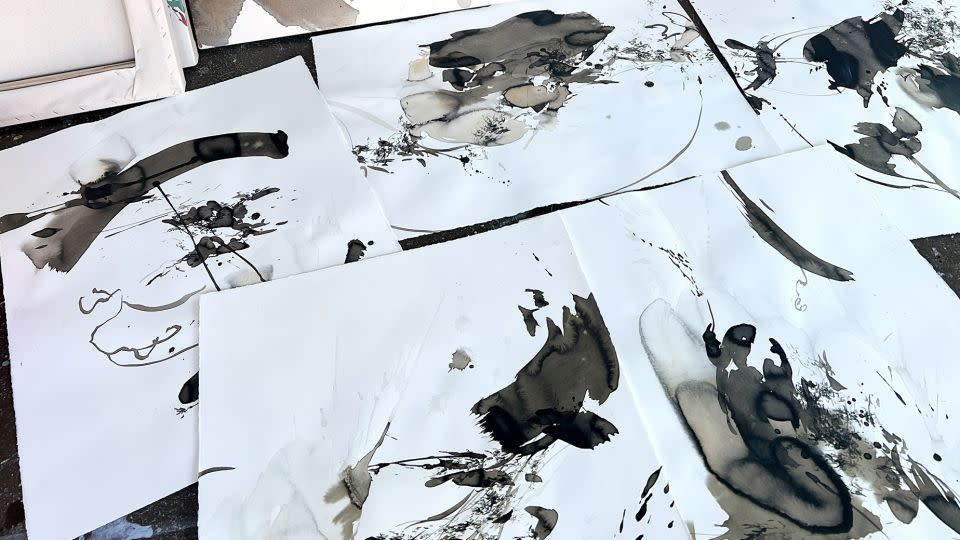
Little credits the artists he works with for helping him understand the importance of his inkmaking, as he said he often gets wrapped up in the day-to-day of the process without as much time for reflection.
“I often just have to make another batch of ink, you know — just throw this gun into acid,” he said. “And so it’s always nice to hear artists’ take on what I’m doing and why it’s important for them.”
He’s also heard from people who have lost loved ones to suicide and want to transform the weapon they used to end their life. As Little is also restricted by which guns he can accept (particularly for out-of-state requests), he is also willing to teach the process as well. That includes workshops he has been invited to participate in, and he lightheartedly calls himself an “open-source sorcerer” when it comes to ink-making from guns.
“I don’t have a corner on this market… I will guide your hand, I will show you the way. I’ve no problem with that at all, and I love teaching people,” he said.
For more CNN news and newsletters create an account at CNN.com


